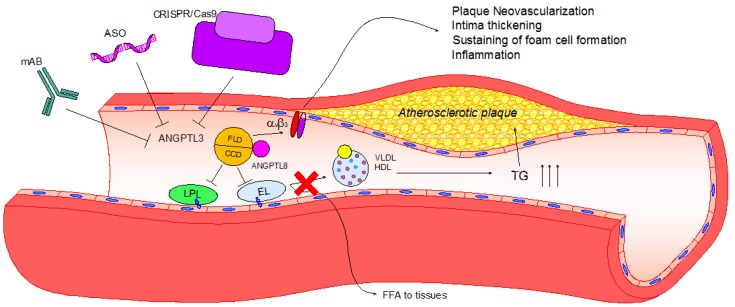Figure 2.
Lipid and non-lipid direct effects of ANGPTL3 and its pharmacological inhibition. Upon activation by ANGPTL8, ANGPTL3 binds to LPL and EL through its coiled-coil domain (CCD), inhibiting their ability to release free fatty acids and phospholipids from VLDL and HDL-C, respectively. Consequently, TG plasma levels increase, eliciting hypertriglyceridemia and atherosclerotic plaque development. Atherosclerotic plaque progression can be enhanced after the activation of the integrin αVβ3 by the fibrinogen-like domain (FLD) of ANGPTL3, leading to plaque neovascularization, intima thickening, foam cell formation and inflammation. To date, three different pharmacological inhibitors have been tested: Monoclonal antibody (evinacumab), antisense oligonucleotide (ASO) and CRISPR/Cas9 editing. All of these effectively reduce ANGPTL3 activity, and thus hypertriglyceridemia and atherosclerotic lesion size in rodent models.

